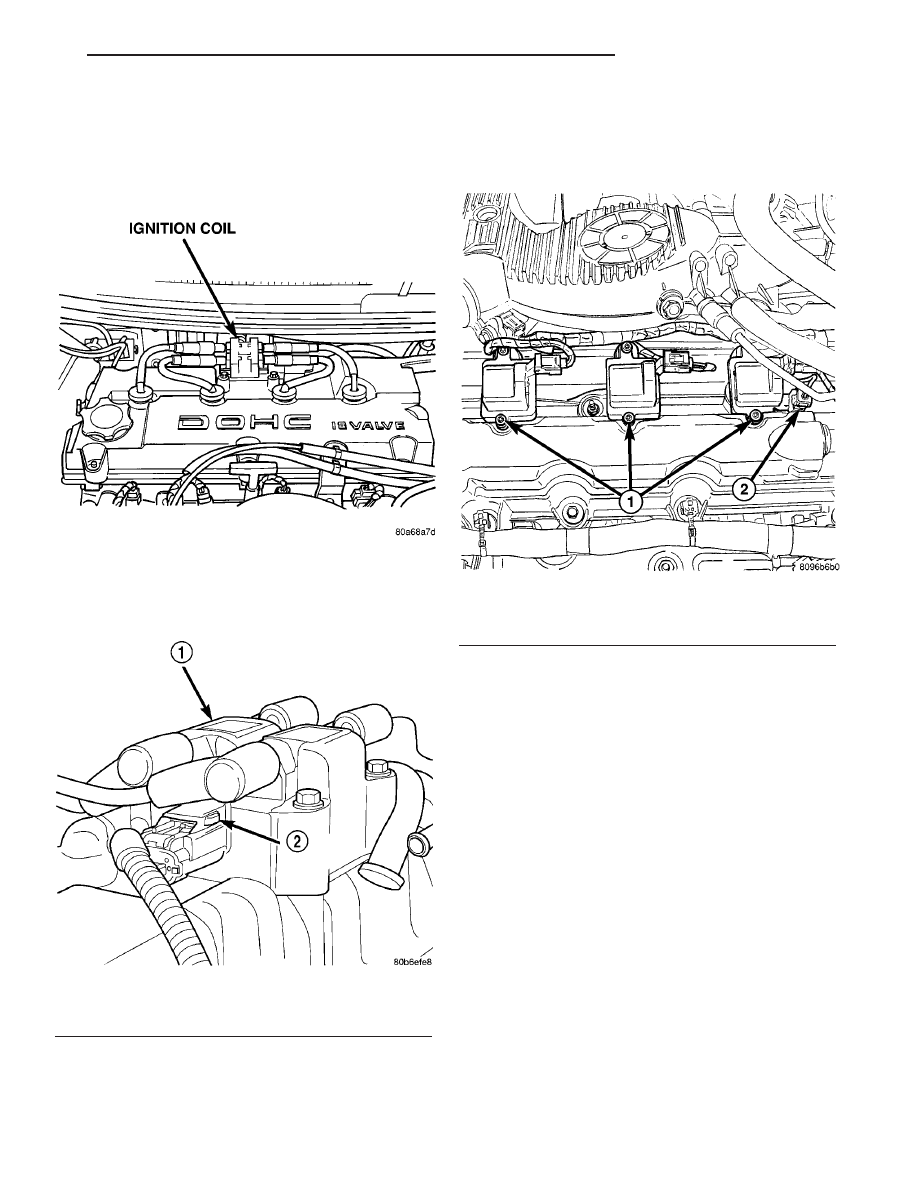Chrysler Sebring, Stratus sedan, Sebring Convertible. Manual - part 335

REMOVAL
REMOVAL - 4 Cylinder
The electronic ignition coil pack attaches directly
to the valve cover (Fig. 5).
(1) Diconnect the negative battery cable.
(2) Disconnect electrical connector from coil pack
(Fig. 6).
(3) Remove spark plug cables, twist and pull
cables to remove.
(4) Remove coil pack mounting bolts.
(5) Remove coil pack.
REMOVAL - 2.7L
(1) Prior to removing the ignition coils, spray com-
pressed air around the coil area and spark plug (Fig.
7).
(2) Remove electrical connector from ignition coil.
(3) Remove 2 fasteners from ignition coil assembly.
(4) Remove ignition coil assembly (Fig. 8).
INSTALLATION
INSTALLATION - 4 CYLINDER
The electronic ignition coil pack attaches directly
to the valve cover (Fig. 5).
(1) Install coil pack on valve cover.
(2) Install bolts and tighten bolts to N·m 11.8 (105
in. lbs.).
(3) Connect the electrical connector (Fig. 6).
(4) Transfer spark plug cables to new coil pack.
The coil pack towers are numbered with the cylinder
identification. Be sure the ignition cables snap onto
the towers.
INSTALLATION - 2.7L
(1) Install ignition coil assembly for spark plug
(Fig. 8).
(2) Install coil screws and tighten to 6.2 N·m (55
in. lbs.).
Fig. 5 IGNITION COIL 4 CYLINDER
Fig. 6 Ignition Coil Connector
1 - COIL
2 - LOCKING TAB
Fig. 7 IGNITION COILS, COIL CAPACITOR
1 - Ignition Coils
2 - Ignition Capacitor
JR
IGNITION CONTROL
8I - 5
IGNITION COIL (Continued)